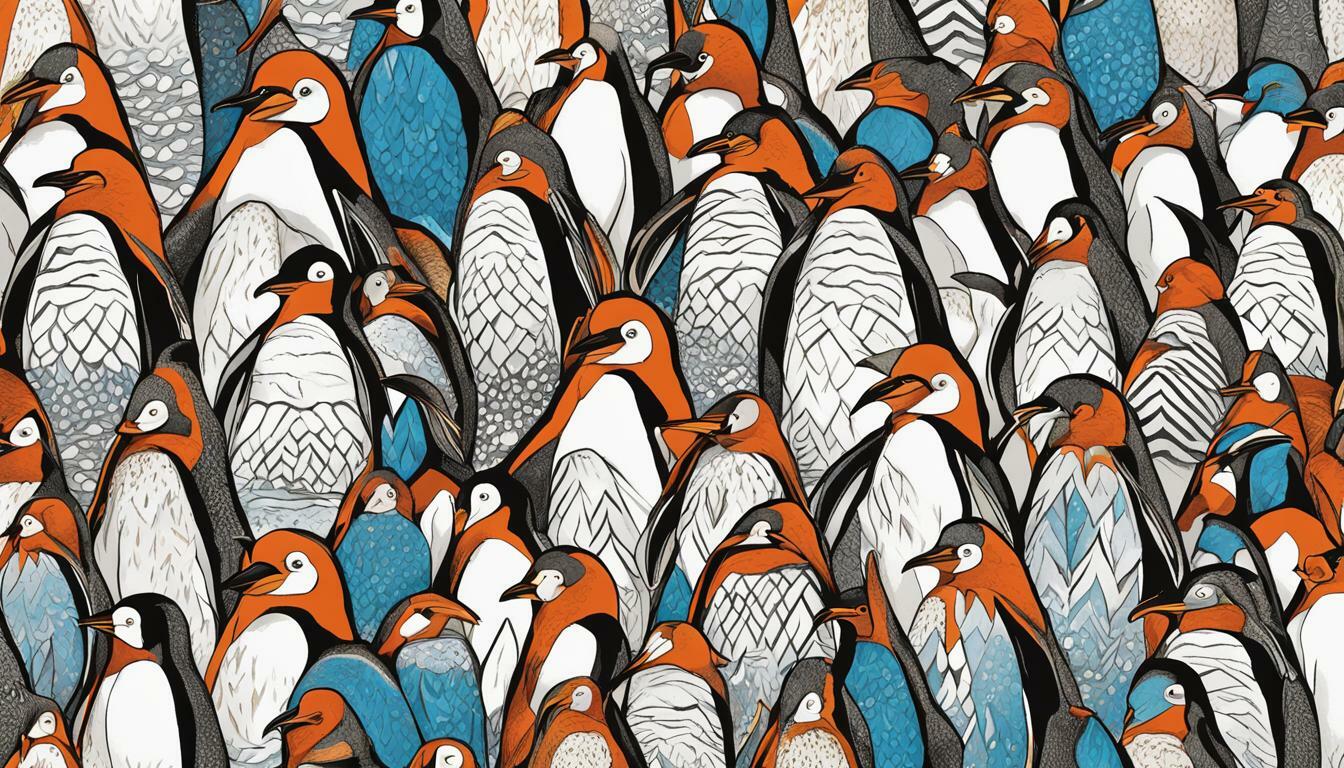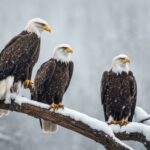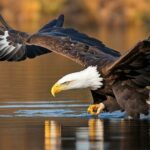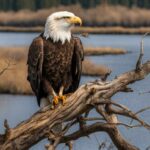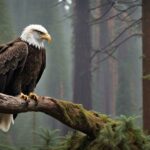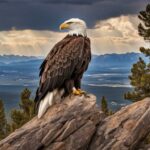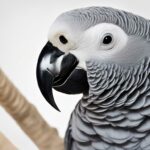When you think of penguins, you might picture them as “flightless birds” waddling around on land. But did you know that penguins actually have feathers?
That’s right! Penguins are birds, and like all birds, they are covered in feathers. However, their feathers are not the same as those of other birds.
In this section, we’ll explore the fascinating world of penguin plumage and why it’s so important for their survival in their icy habitats. We’ll also debunk the myth that penguins don’t have feathers!
Key Takeaways:
- Penguins have feathers, despite the common misconception that they don’t
- Their feathers are specialized adaptations that help them stay warm and swim efficiently in cold ocean waters
- Penguin plumage varies between species and plays a crucial role in species recognition and courtship rituals
Understanding Penguin Plumage
As you may have guessed, penguins have unique adaptations when it comes to their feathers. These adaptations are crucial to their survival in their harsh Antarctic environment. Let’s dive deeper and explore the different types of feathers that make penguins such efficient swimmers.
Penguin Adaptations
The feathers of penguins have undergone some significant modifications compared to other bird feathers. Penguin feathers are shorter, stiffer, and more densely packed, providing insulation and reducing drag when swimming. Penguin feathers lack the interlocking hooks found on most bird feathers, which could be useless when it comes to underwater movement.
Additionally, Penguins have a specially designed gland located near their tails that secretes oil, which they spread across their feathers using their beaks. This oil helps to waterproof their feathers, and penguins can dive for longer periods without their feathers getting waterlogged.
Bird Feathers and Penguins
Penguin feathers have a closer resemblance to mammalian fur than to bird feathers. This is because feathers evolved to meet different needs in birds and provide insulation, lift, and steerability. Penguins, on the other hand, have evolved to swim in the water.
Their feathers have a downy layer of soft, fine feathers close to their skin and a top layer of flat, stiff feathers forming their waterproof outer layer. These two layers work together to trap air between them which keeps the penguins warm in the icy cold Antarctic climate.
Feathered Penguins
All penguins have feathers, but not all feathers look the same. Penguins have evolved with a diverse range of feathers in color, patterns, and size. The macaroni penguin has a distinctive yellow crest on its head, while the emperor penguin has a black and white pattern that helps them blend in with their surroundings.
Feathers play a crucial role in courtship rituals and species recognition among penguins. Feather coloration also has been linked to social status among individuals in a colony.
Penguin Species and their Feathers
Penguins are a diverse group of birds, with 18 different species found in various regions of the Southern Hemisphere. Each species has its unique characteristics, including differences in the color, pattern, and size of their feathers.
One of the most noticeable variations among penguin species is the size and shape of their feathers. For example, the emperor penguin has the densest and longest feathers of any penguin species, whereas the little blue penguin has shorter and sparser feathers. These differences in feather structure and distribution allow penguins to adapt to their particular environment and lifestyle.
Feathers play an essential role in penguin biology, particularly in species recognition and courtship rituals. Male penguins use their feathers to attract females by displaying their colored plumage or unique feather patterns. For instance, male gentoo penguins often place small pebbles around their mates’ nests to display their strength and build skills and attract females.
In addition to the visual role that feathers play in penguin behavior, they also provide insulation and waterproofing. Penguins have specialized feathers that are densely packed, trapping a layer of air against their skin that helps to insulate them in cold environments. These feathers also contain an oil that penguins distribute across their body to make them waterproof.
The Structure of Penguin Feathers
While penguin feathers may appear simple at first glance, they possess a complex and highly specialized structure that enables these flightless birds to survive in the extreme conditions of their Antarctic habitat.
Their feathers have a central shaft that runs down the length of each feather. Attached to this shaft are two rows of barbs, each with small hooks called barbules that interlock with neighboring barbules, creating a tight-knit structure that traps air to provide insulation.
Unlike most birds, penguins have flat and broad outer feathers that are highly waterproof, protecting the birds from the icy waters of the Southern Ocean. Beneath these feathers are soft down feathers that provide additional insulation and help maintain body heat.
| Feather Type | Function |
|---|---|
| Central Shaft | Provides the structure for the feather and anchors it to the bird’s skin. |
| Barbs and Barbules | The interlocking structure between the barbs and barbules creates a tight-knit, insulating layer of feathers. |
| Outer Feathers | The flat and broad shape is highly waterproof, protecting penguins from the elements. |
| Down Feathers | Provide additional insulation and help maintain body heat. |
This unique structure is crucial for penguins’ survival in their harsh environment, allowing them to maintain a constant body temperature and stay dry while foraging for food in the frigid waters.
Additionally, the tightly interlocking feathers help streamline penguins’ bodies, reducing drag and enabling them to swim efficiently through the water, reaching speeds of up to 22 miles per hour.
Evolution of Penguin Feathers
Penguin feathers have evolved over millions of years to suit their unique aquatic lifestyle. The fossil record indicates that the earliest penguins had feathers that were similar to those of modern birds, but with more primitive features.
As penguins evolved, their feathers became more specialized for their needs. For example, their feathers became shorter and more tightly packed to provide better insulation in the cold Antarctic waters. They also developed a unique structure with barbs that hook together to form a tight, waterproof barrier.
Genetic studies have also shed light on the evolution of penguin feathers. Researchers have found that penguins have lost the ability to produce the protein beta-keratin, which is a key component of other bird feathers. Instead, they have developed a new type of beta-keratin that is better suited to the demands of their aquatic lifestyle.
Overall, the evolution of penguin feathers is a fascinating example of how animals can adapt to even the harshest environments. By developing specialized features like their waterproof feathers and streamlined bodies, penguins have become highly adapted to life in the Antarctic and are able to thrive where few other animals can survive.
The Fascinating Biology of Penguins
Aside from their distinct appearance, penguins have several remarkable biological features that have allowed them to thrive in harsh Antarctic conditions. Their streamlined, torpedo-shaped body helps them move efficiently through the water and avoid predators. Additionally, penguins have dense bones to help them dive deep and specialized flippers for optimal swimming performance.
But perhaps the most important adaptation for penguins is their feathers. Contrary to popular belief, penguins do indeed have feathers that play a critical role in their survival in icy environments. Their feathers are highly modified and specialized for their aquatic lifestyle.
Not only do penguin feathers provide insulation to keep them warm in freezing temperatures, but they also serve as a waterproof barrier to protect them from the frigid water. The outer feathers are coated in a waxy substance that repels water, while the underlayer of soft down feathers traps body heat and keeps the penguin warm.
The structure of penguin feathers is also unique, with interlocking barbs and barbules that create a tight seal. This design allows penguins to maintain their body temperature and reduce drag while swimming. The barbs and barbules also help penguins to preen and maintain their feathers, which is essential for maintaining waterproofing and insulation.
Penguins also use their feathers for species recognition and courtship rituals. Many species of penguins have distinct patterns or colors on their feathers that help them identify members of their own species. During courtship, male penguins will present a rock or pebble to females, accompanied by a distinctive call and an elaborate display of their feathers.
Overall, penguin feathers are a remarkable feat of evolution and adaptation that have allowed these flightless birds to thrive in some of the harshest environments on Earth. Their unique feather structure, combined with their other amazing biological features, make penguins truly one of a kind.
Conclusion
In conclusion, penguins do indeed have feathers, despite being commonly referred to as “flightless birds.” Their feathers are essential for insulating their bodies and allowing them to swim efficiently in cold Antarctic waters.
We have explored the different types of penguin feathers, including their waterproof outer feathers and soft down feathers, and how these adaptations help penguins survive in their harsh environments. We’ve also delved into the diverse colors, patterns, and sizes of feathers among different penguin species and their role in species recognition and courtship rituals.
Additionally, we’ve examined the intricate structure of penguin feathers, including their barbs, barbules, and central shaft, and how these contribute to their insulation and streamline their bodies for efficient swimming. We’ve also discussed the evolution of feathers in penguins and how it has contributed to their successful adaptation to aquatic environments.
Finally, we’ve highlighted other remarkable biological features of penguins, such as their streamlined body shape, dense bones for deep diving, and specialized flippers for efficient swimming, which complement their feathers in their unique lifestyle.
Overall, the fascinating biology of penguins is a testament to the incredible adaptations that species can develop in order to thrive in their environments. Through their feathers and other remarkable features, penguins continue to captivate and inspire scientists and animal lovers alike.
Is It True That People Eat Penguins?
Is it true that people eat penguins? Eating penguins: revealing the truth. While some indigenous cultures may have consumed penguins in the past, it is not a common practice today. Penguins are protected species, and international conventions safeguard their conservation. Therefore, the idea of people actively consuming penguins is largely a myth.
FAQ
Q: Do penguins have feathers?
A: Yes, penguins have feathers. Despite being flightless birds, feathers play a crucial role in the lives of penguins. They help keep the penguins warm in the cold Antarctic environment and enable them to swim efficiently.
Q: What types of feathers do penguins have?
A: Penguins possess two main types of feathers. They have waterproof outer feathers that protect them from the cold water and wind, and they also have soft down feathers that provide insulation and keep them warm.
Q: How do feathers vary among different penguin species?
A: Feathers vary in color, pattern, and size among different penguin species. These variations serve purposes such as species recognition and courtship rituals within penguin populations.
Q: What is the structure of penguin feathers?
A: Penguin feathers have a complex structure, consisting of barbs, barbules, and a central shaft. This unique structure helps penguins maintain insulation and streamline their bodies for efficient swimming.
Q: How have penguin feathers evolved?
A: The evolution of feathers in penguins has played a vital role in their adaptation to aquatic environments. Fossil records and genetic studies offer insights into the development and evolution of penguin feathers over time.
Q: What are some other remarkable biological features of penguins?
A: Penguins have a streamlined body shape, dense bones for deep diving, and specialized flippers for efficient swimming. These adaptations, along with their feathers, contribute to their unique lifestyle.

